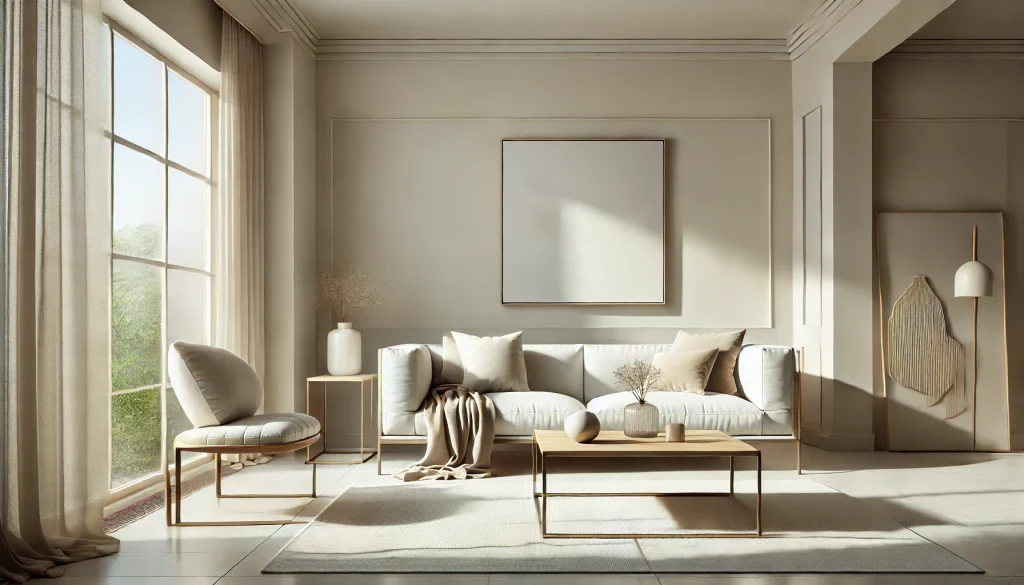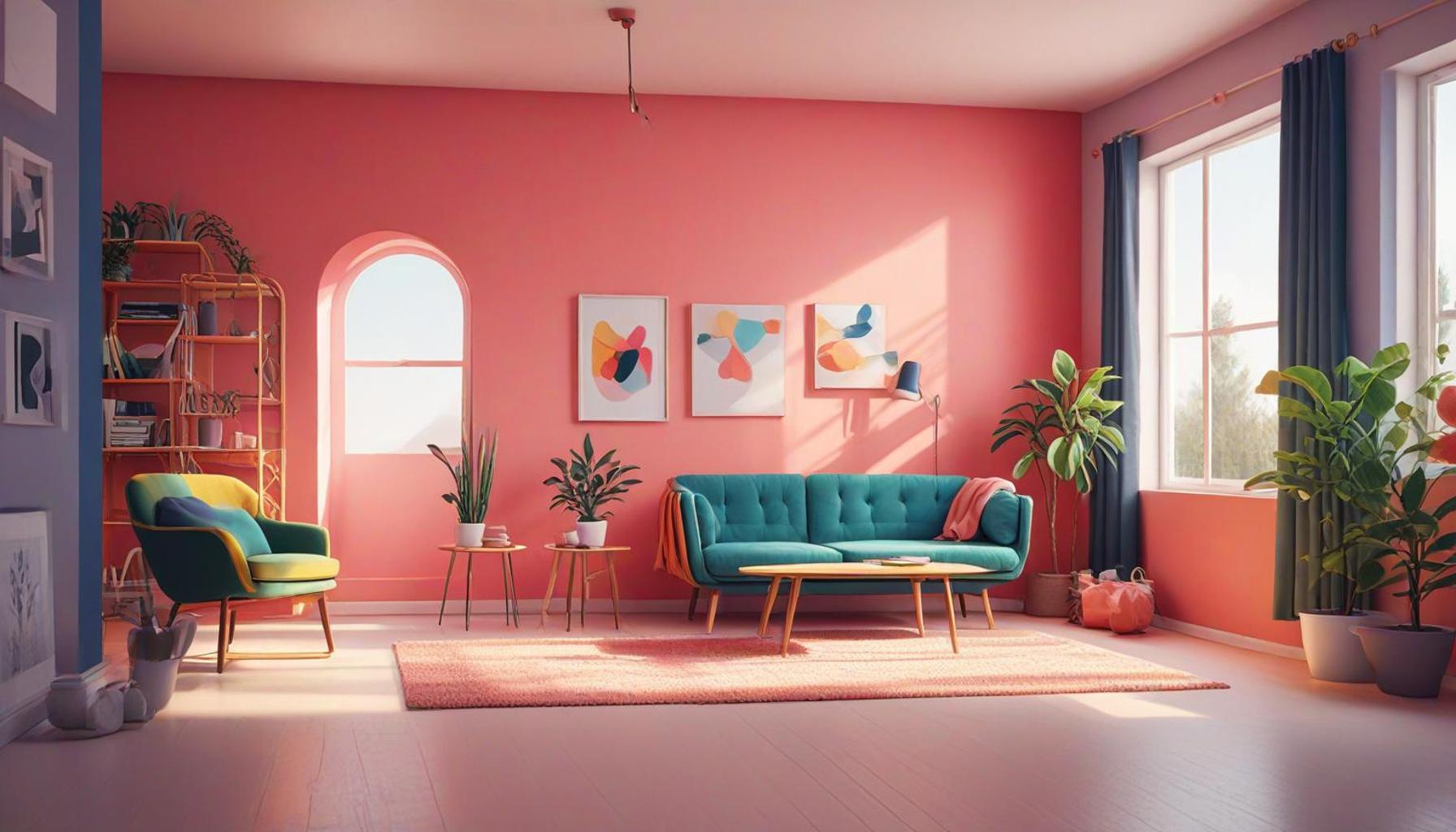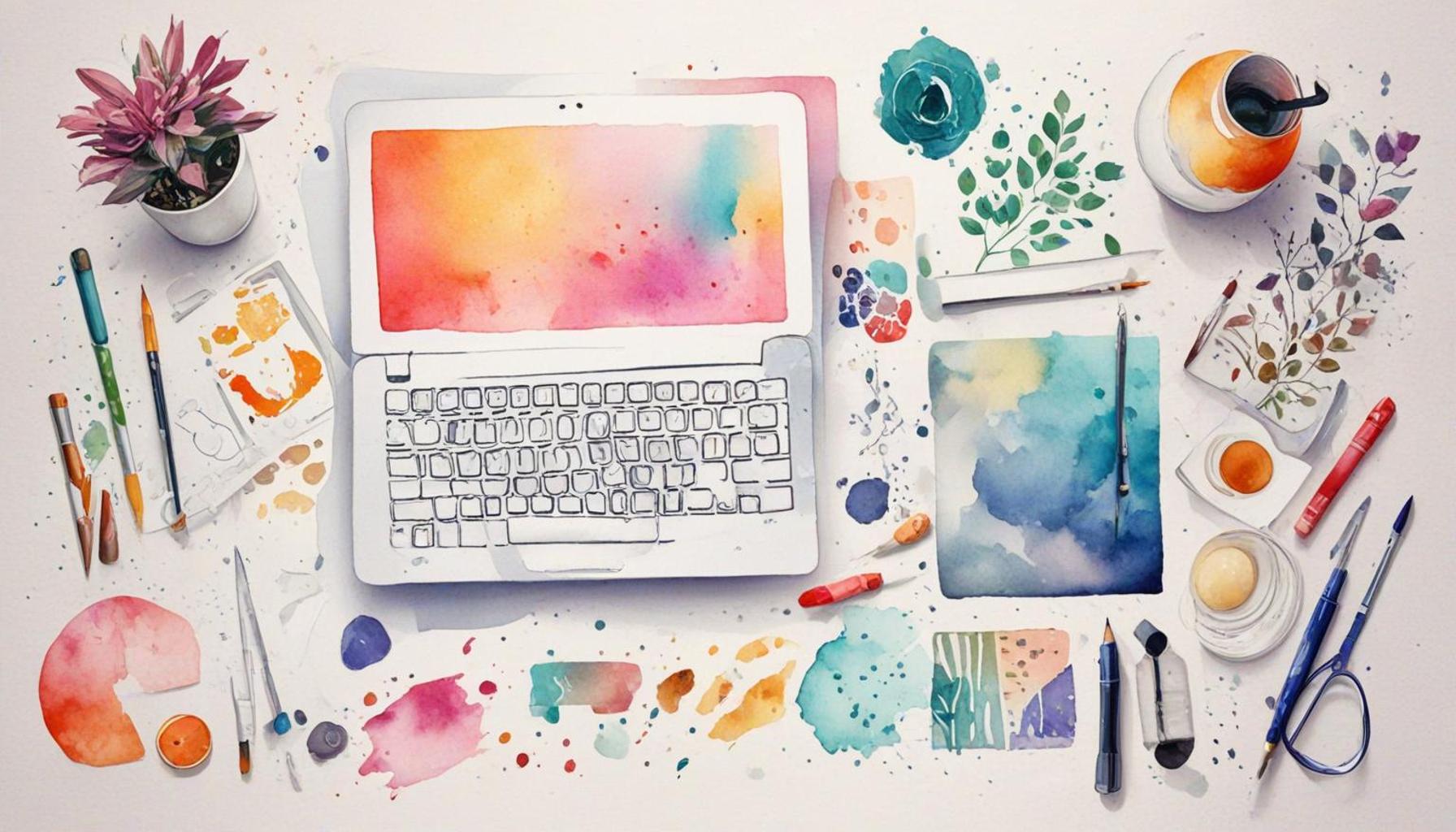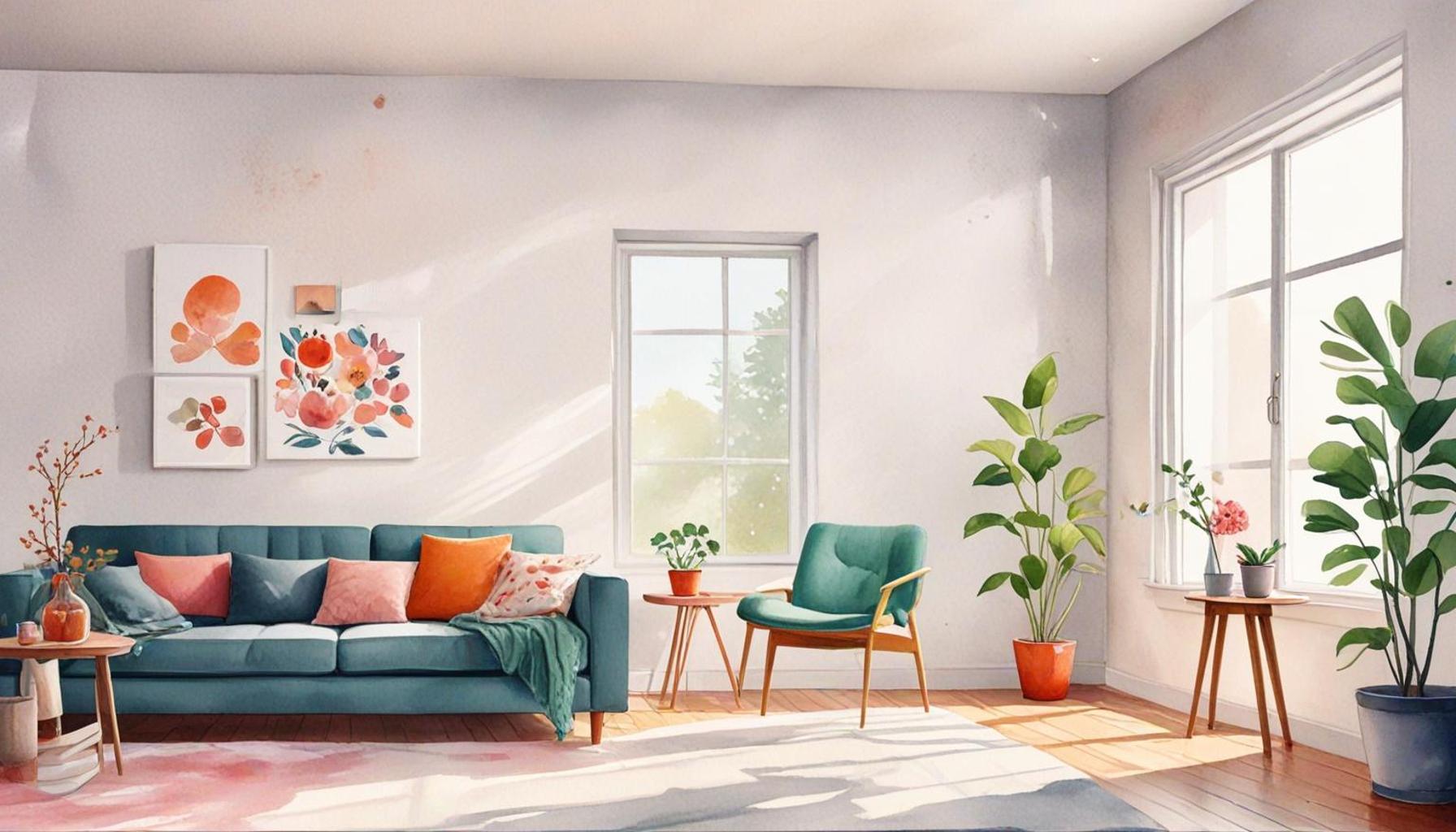The Importance of Intentional Design in Creating Minimalist Spaces to Increase Productivity

The Importance of Intentional Design in Workspaces
In the hustle and bustle of modern work life, the need for a workspace that promotes both *efficiency* and *clarity* has never been more pronounced. Central to this idea is intentional design, a philosophy that advocates for a thoughtful and systematic approach to creating environments, particularly in minimalist settings. By prioritizing simplicity and purpose, intentional design seeks to create spaces where every element contributes to a harmonious and productive atmosphere.
Understanding Key Features of Intentional Design
A key aspect of intentional design is *clarity*. Simplified layouts help to minimize distractions, allowing individuals to focus on their tasks. For example, a well-organized desk with only the essential tools—such as a computer, a notepad, and a pen—can significantly reduce cognitive load and improve concentration. In contrast, a cluttered work surface can lead to a feeling of chaos, impeding workflow and creativity.
Another crucial feature is *functionality*. Each item in a workspace should serve a definitive purpose. This means that furniture should not only be aesthetically pleasing but also ergonomically designed to support long hours of work. Take, for instance, adjustable desks or chairs that promote good posture. Not only do these items enhance productivity, but they also contribute to physical well-being, reducing the risk of injury over time.
The Role of Natural Light
Incorporating *natural light* is yet another significant aspect of intentional design. Studies reveal that exposure to natural light boosts mood and enhances cognitive function. Workspaces with large windows or strategically placed mirrors that reflect sunlight can create an inviting atmosphere that fosters creativity. Additionally, environments flooded with natural light can reduce eye strain and fatigue, making it easier for employees to remain engaged throughout the day.
The Psychological Impact of Minimalist Workspaces
Research has shown that a minimalist workspace not only leads to improved quality of work but also enhances overall job satisfaction. Employees in well-designed environments report lower stress levels and higher motivation. Moreover, by eliminating clutter and unnecessary distractions, workers can experience an increase in cognitive functions such as memory retention and problem-solving capabilities.

Ultimately, the intentional design of spaces beckons us to rethink our environments and the profound impact they have on our daily lives. By creating workspaces that marry *efficiency*, *clarity*, and *well-being*, we take a crucial step toward not just increased productivity but also a healthier work-life balance. This exploration into intentional design opens the door for individuals and organizations alike to re-evaluate their own spaces and make informed decisions that prioritize not just aesthetics but functional and psychological needs.
DISCOVER MORE: Click here for efficiency tips
Maximizing Functionality Through Intentional Design
At the core of intentional design is its ability to maximize functionality in a workspace, which ultimately leads to greater productivity. Emphasizing an environment that is *purposeful* allows individuals to streamline their processes, making them more effective. In minimalist spaces, every element is deliberate and serves a specific role, fostering a culture of productivity and clarity.
Elements of Functional Minimalism
Functional minimalism involves a blend of essential features that contribute to an effective workspace. Here are some key elements that characterize intentional design in minimalist spaces:
- Quality over Quantity: In a minimalist workspace, selecting high-quality essentials can make all the difference. Investing in multifunctional furniture, such as desks with built-in storage, can reduce clutter while enhancing practicality.
- Intentional Color Palette: The choice of colors in a workspace can impact mood and focus. Soft, neutral tones tend to create a calming effect, while vibrant accent colors can stimulate creativity without causing overstimulation.
- Smart Organization: Thoughtful organization is crucial. Using tools like pegboards, drawer dividers, and shelving can help maintain a clean and organized space, ensuring that necessary items are easily accessible.
- Minimized Digital Clutter: Just as physical clutter can hinder productivity, so can digital disarray. Adopting a minimalist approach in digital workspaces—such as keeping a streamlined computer desktop and managing files efficiently—can enhance focus and workflow.
The Impact of Aesthetics on Productivity
The visual appeal of a workspace is not merely superficial; it plays a pivotal role in influencing a worker’s state of mind. An aesthetically pleasing environment can lead to increased morale and job satisfaction. This is particularly relevant in the United States, where research conducted by the University of California found that offices designed with intentional aesthetics reported a 20% increase in productivity. Employees feel more inspired to engage with their work when they are surrounded by an environment that reflects their values and promotes their well-being.
Furthermore, the psychology of minimalism suggests that a simple, uncluttered space can lead to enhanced focus. Psychologists have identified that individuals working in minimalist environments experience *reduced anxiety* and *greater motivation*. This connection between space and mindset underscores the importance of composition in fostering a productive culture.
In sum, the elements of functional minimalism combine to create an intentional design that not only pleases the eye but also supports productivity. By focusing on quality, color, organization, and aesthetics, minimalist spaces can unlock a host of benefits, paving the way for a more engaged and productive workforce. As we delve deeper into the various facets of this design philosophy, it becomes evident that creating intentionally designed workspaces is not just a trend; it is essential for cultivating environments where productivity thrives.
| Design Philosophy | Impact on Productivity |
|---|---|
| Intentionality | Promotes focus and reduces distractions, leading to enhanced efficiency. |
| Clutter Minimization | Encourages a calm environment that fosters creativity and mental clarity. |
Intentional design focuses on creating environments that serve a specific purpose, enhancing our interaction with the space. By carefully selecting furniture, colors, and layouts, individuals can cultivate a workspace that encourages a deep level of engagement and productivity. This intentionality removes the excess, allowing elements that truly matter to shine.Moreover, clutter minimization plays a critical role in boosting productivity. Research indicates that a visually streamlined space significantly reduces stress levels, encouraging a sense of well-being among users. This reduction in mental clutter paves the way for greater creativity and problem-solving abilities. As such, the premise of intentional design in minimalist spaces not only increases productivity but also creates an ambiance that supports emotional well-being, leading to a more fulfilling work experience.
DISCOVER MORE: Click here to enhance your personal organization
Enhancing Well-being Through Thoughtful Space Planning
Intentional design encompasses more than just aesthetics and functionality; it also plays a crucial role in enhancing the well-being of individuals. In a world where stress and distraction can severely impact productivity, creating a minimalist workspace that prioritizes mental health is vital. By optimizing space for both comfort and utility, individuals can experience a more balanced work-life synergy.
Ergonomics as a Key Consideration
One of the fundamental aspects of intentional design is ergonomics—the science of designing furniture and spaces that fit the human body. A properly designed workspace can prevent discomfort and injury, leading to prolonged productivity. Research shows that ergonomic design can reduce workplace injuries by as much as 60%. This highlights the significance of investing in ergonomic chairs, adjustable desks, and other supportive furnishings that encourage proper posture and movement. In minimalist spaces, every piece of furniture can be curated with ergonomics in mind, ensuring comfort without the potential clutter of unnecessary items.
Natural Elements and their Benefits
Incorporating natural elements into minimalist design is another game-changer for enhancing productivity. The integration of plants, natural light, and organic materials into the workspace can significantly influence mental health. Studies have shown that exposure to green spaces can reduce stress levels and enhance cognitive function. Offices featuring indoor plants see an increase in productivity by up to 15%. The use of materials such as wood or stone not only adds texture to a minimalist environment but also aids in creating a calming atmosphere, fostering a sense of peace—a powerful ingredient for sustained focus and creativity.
The Freedom of Mobility in Open Spaces
The layout of a workspace can profoundly impact the way individuals interact with it. Intentional design often embraces open spaces that encourage movement and collaboration. A flexible workspace invites circulation, allowing workers to engage with one another, share ideas, and foster teamwork. According to a report from the Harvard Business Review, companies that adopt open spaces report a boost in collaboration and innovation by up to 25%. By removing physical barriers and providing open pathways, minimalist design not only enhances visual appeal but also stimulates interaction, breaking down silos and promoting a community-driven workplace.
Mindful Technology Use
In an age dominated by technology, intentional design in minimalist spaces also necessitates mindful technology use. Removing distractions, such as excessive screens or notifications, can enhance focus and productivity. Workspaces that prioritize technology’s role in efficiency combine the essential elements of intentional design with the goal of minimizing disruption. For instance, establishing designated digital zones where devices are kept can help delineate boundaries between focused work and digital distractions. This balance allows individuals to harness technology to their advantage rather than let it contribute to a chaotic environment.
Creating a minimalist workspace through intentional design extends beyond mere aesthetics—it actively contributes to a healthier, more productive work culture. By prioritizing ergonomic features, natural elements, flexible arrangements, and mindful technology use, individuals can cultivate environments that not only enhance productivity but also support overall well-being. As more organizations embrace these principles of design, the benefits of intentionality in minimalist spaces will continue to ripple throughout the workplace landscape.
DISCOVER MORE: Click here to dive deeper
Conclusion: The Transformative Power of Intentional Design
In summary, intentional design plays an indispensable role in establishing minimalist spaces that significantly enhance productivity. By focusing on ergonomics, integrating natural elements, promoting mobility, and facilitating mindful technology use, individuals can create environments that not only inspire creativity but also support mental health and overall well-being. The synergy between thoughtful design and functionality allows for a balanced work-life dynamic that is essential in today’s fast-paced world.
As the workplace landscape continues to evolve, businesses must recognize that investing in intentional design is more than an aesthetic choice; it is a strategic decision that can lead to improved employee morale, increased collaborative efforts, and heightened productivity. In fact, design-driven organizations often report tangible benefits not just in output but also in employee retention and satisfaction rates.
Therefore, as we move forward, it is imperative for leaders and individuals alike to embrace the principles of minimalist design. By prioritizing intention over impulse—choosing what is necessary and beneficial over what is merely decorative—we create a work environment that not only thrives on productivity but also nurtures a culture of innovation and well-being. The journey toward a more productive, minimalist workspace is a commitment to fostering a holistic, healthy approach to work life that can yield profound results.


